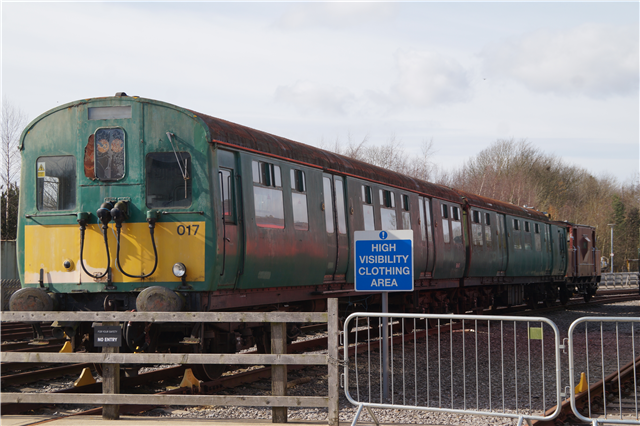Class 306 trains were built to a pre-World War II design by Birmingham Railway Carriage and Wagon Company (Driving Trailer) and Metro Cammell (Driving Motor Brake and Trailer) and were equipped with Metrovick traction equipment Crompton Parkinson traction motors. Each carriage featured two sets of twin pneumatic sliding passenger doors, which could be opened by either the guard or the passengers, who could use buttons fitted inside and outside the doors. The order was placed by the LNER in 1938 but official delivery did not commence until February 1949.
When built the trains were energised at 1,500 V direct current (DC) which was collected from overhead wires by a diamond pantograph located above the cab on the Motor Brake Second Open (MBSO) vehicle.
From 1959 to 1961 the overhead wires were re-energised at 25 kV alternating current (ac) (and 6.25 kV ac in the inner London areas where headroom for the overhead wires was reduced) and the trains were rebuilt to use this different electrical system. A transformer and rectifier unit was fitted to the underframe between the bogies of the intermediate Trailer Brake Second (TBS) and the pantograph, now a more modern Stone Faiveley AMBR design, was moved to the roof of this carriage. Because this reduced the headroom inside the train, the guard's compartment was relocated to be directly below the pantograph. The trains were then numbered 001-092 with the last two digits of each carriage number (LNER coaching series numbers used) the same as the unit number.
